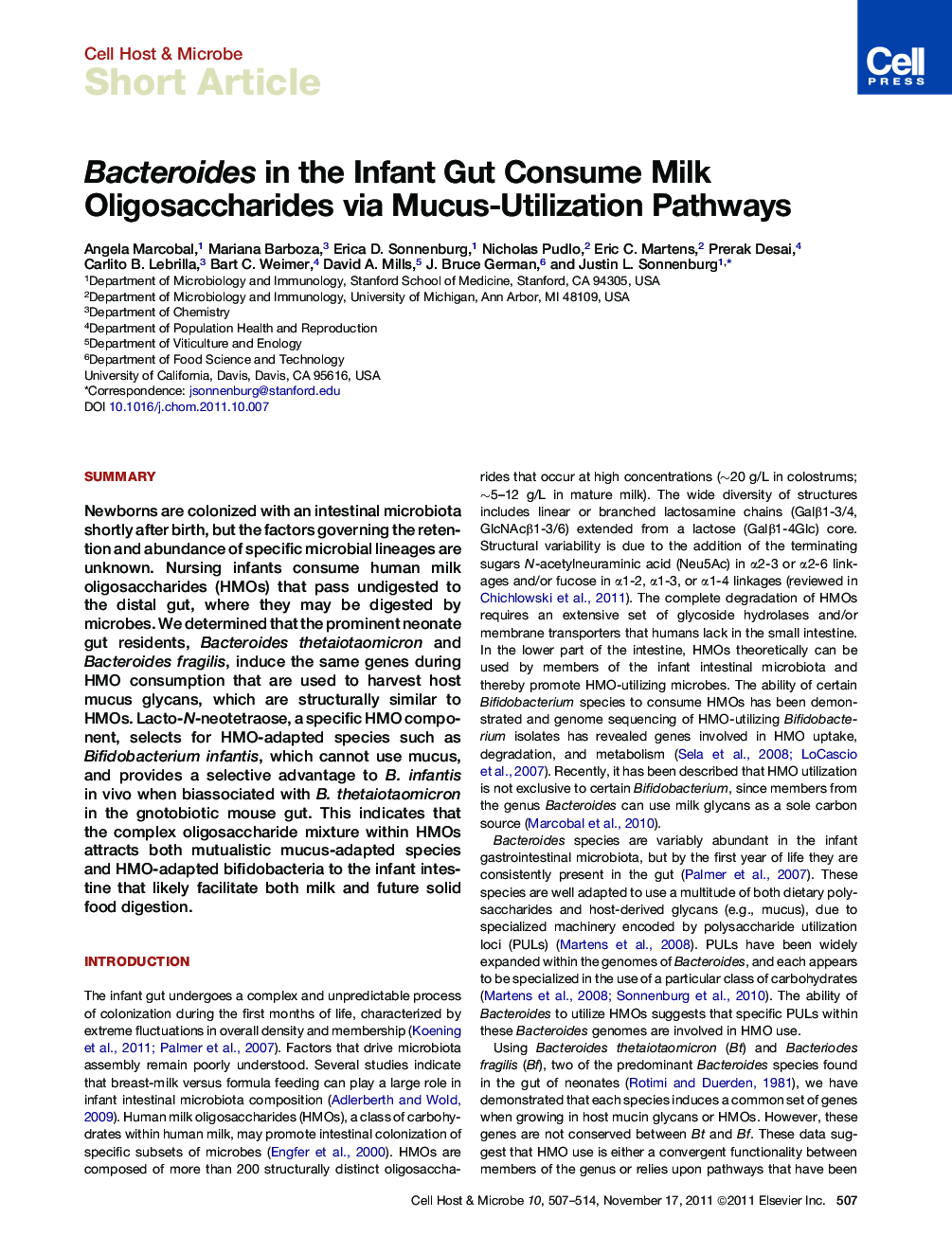| Article ID | Journal | Published Year | Pages | File Type |
|---|---|---|---|---|
| 4361353 | Cell Host & Microbe | 2011 | 8 Pages |
SummaryNewborns are colonized with an intestinal microbiota shortly after birth, but the factors governing the retention and abundance of specific microbial lineages are unknown. Nursing infants consume human milk oligosaccharides (HMOs) that pass undigested to the distal gut, where they may be digested by microbes. We determined that the prominent neonate gut residents, Bacteroides thetaiotaomicron and Bacteroides fragilis, induce the same genes during HMO consumption that are used to harvest host mucus glycans, which are structurally similar to HMOs. Lacto-N-neotetraose, a specific HMO component, selects for HMO-adapted species such as Bifidobacterium infantis, which cannot use mucus, and provides a selective advantage to B. infantis in vivo when biassociated with B. thetaiotaomicron in the gnotobiotic mouse gut. This indicates that the complex oligosaccharide mixture within HMOs attracts both mutualistic mucus-adapted species and HMO-adapted bifidobacteria to the infant intestine that likely facilitate both milk and future solid food digestion.
► Bacteroides are adept at consuming human milk oligosaccharides ► Bacteroides induce mucus-utilization genes to consume human milk oligosaccharides ► Lacto-N-neotetraose selects for Bifidobacteria relative to Bacteroides in vivo
